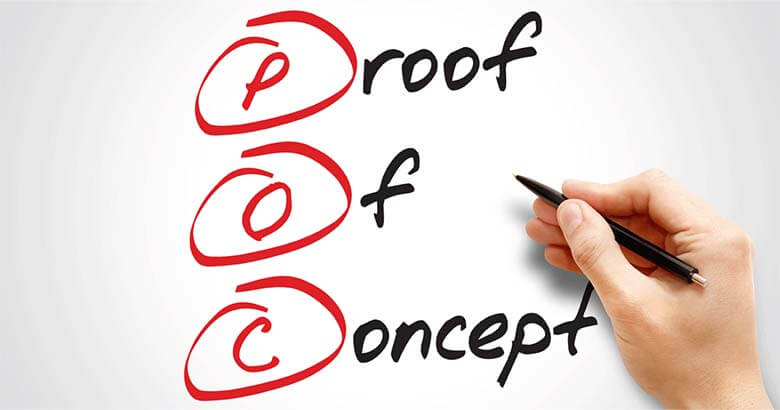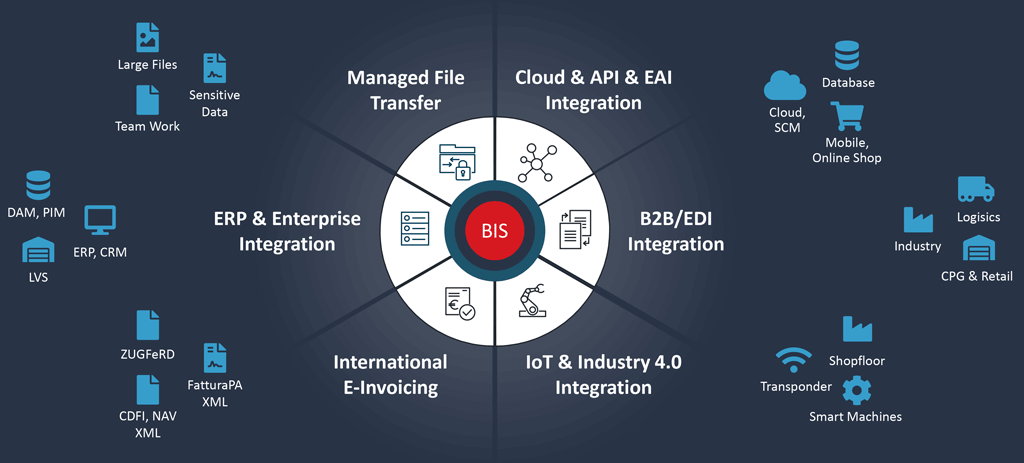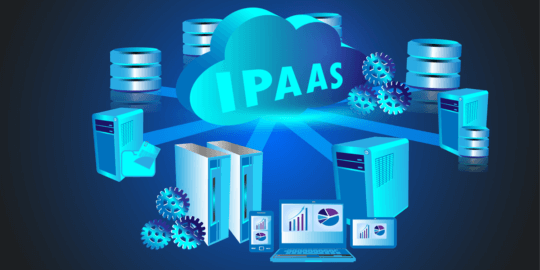The Benefits of a PoC

How to choose the Perfect Integration Software and Cloud Solution.
A Proof of Concept (PoC) is a key part of the decision and vendor selection process and is always worthwhile, if you are planning a large investment in a new IT solution. Learn how to obtain the best results from a PoC when considering an Integration Platform or Cloud Solution.
What is a PoC?
A Proof of Concept (PoC) is a test run that proves the basic feasibility of an IT based project for one or several representative use cases. A well-planned and well-executed PoC verifies that the technical functionality of a new IT solution works as intended.
IT solutions can be very complex. However, for many IT requirements there are already preconfigured software products on the market. These software products are already tested (as well as being continually developed and maintained), and can be used with little configuration. Therefore, it is usually advantageous for companies to use such a software product instead of developing an individual solution from scratch.
Nevertheless, even with a software product, the basic proof of feasibility must be provided via a PoC. This is especially true, if the desired IT solution is of strategic importance for the company. A well-executed PoC requires careful planning and preparation.
Typical software selection process
Any major investment in a strategic IT solution, such as an Integration Platform or Cloud Solution, requires a granular selection and decision process. Your journey to the perfect IT solution should ideally comprise the following five steps:
- Define the use cases and the corresponding technical requirements
Try to get a first orientation as early as possible about what this all costs. After all, there is nothing to be gained for all parties involved, if you have to decide on the injunction alternative at the end of the selection process and do not carry out the project. - Gather the long list of providers
Gain an overview of all potential providers for your IT solution through broad-based market research. You may also want to enlist the help of third party analysts or obtain information from review portals such as IT Central Station or Gartner Peer Insights. - Request for Information (RFI)
- Carefully prepare a detailed RFI which covers all your potential requirements.
- Send the RFI to all IT solution providers you selected from your long list.
- Screen their responses on technical, commercial and strategical capability and
- Verify the customer references This will provide you with a preliminary ranking.
- Put the remaining potential candidates on a shortlist for the next step.
- Request for Proposal (RFP)
Create an RFP and send it to the best companies on your shortlist. An RFP can turn out to be a rather comprehensive questionnaire. Therefore, it has proven best practice to limit the RFP to only the most promising candidates on the shortlist. This saves the less promising candidates a lot of work and prevents you from getting overwhelmed with information and investing too much time on evaluation. Closely check the customer references You may even consider calling customer references. The RFP typically reduces the shortlist to one or two preferred solution providers. - Proof of Concept (PoC)
At this point the PoC comes in to play. It provides you with the final confirmation that the solution of your preferred provider actually covers the required services.
PoCs and other software selection methods
A PoC is a good method to finally decide on an IT solution. There are even more methods, which might in some cases complement or even replace a PoC:
PoC vs. Customer References
Customer references allow a valid comparison with standard solutions and establish a certain level of trust with a vendor or cloud provider. In case you are looking for more than a standard solution, however, you cannot necessarily compare customer references with your own environment. In this case, reasonable customer references can only set the context for a PoC. To ensure that your individual requirements are met, a PoC is essential.
PoC vs. Test Installation
A test installation implies that you learn as you go which is sufficient for a tactical tool. A strategic IT solution, however, requires a more holistic approach to avoid any unwanted surprises later.
PoC vs. Prototype
A prototype is the draft of a product at a very early stage. It paves the road to a market-ready product. When selecting an IT solution for internal use, however, a go-to-market solution is typically not intended. Therefore, a prototype is more applicable in the case of a do-it-yourself approach rather than as part of a purchase process of an IT solution from an external provider.
PoC vs. Minimum Viable Product (MVP)
As the name suggests, a MVP is a minimalist version of a product providing just enough features to remain viable. It has the core functionality but not the assets of a final market ready product. In comparison, a PoC tends to verify technical assumptions and use cases before purchasing / implementing a product or IT solution. If you are not sure, whether the IT solution you have chosen works, a PoC is a better way to find out rather than a MVP. Both, a PoC and a MVP can help you verify the assumptions about the result. This way you save time and money with both methods, but each method has its own scope and purpose.
What else you should consider with PoCs?
To obtain meaningful POC results that enable you to make a decision on a viable IT solution, you should pay attention to the following:
- Understand the needs of you company’s Lines of Business (LoBs) and the stakeholders who need the IT solution capability
- Agree on the goals
- Select important use cases that are complex enough to present a challenge
- Determine the scope and key performance indicators to measure the success of the PoC
- Perform an objective measurement of the vendors’ efforts on the basis of a clear set of rules and an appropriate checklist
- Drive vendors to install and deliver the PoC in your test environment, not on an artificial demo landscape
- Set a competitive but reasonable PoC timeframe in accordance with your use case
- Gain internal support, time, commitment and focus
- Ask the vendor for reasonable documentation and knowledge transfer. This will support you to entirely test and evaluate the delivered PoC
Proceeding this way, a meaningful PoC verifies that an IT or cloud solution can meet the specified challenges and address the use cases in your environment. This brings your stakeholders on-board and provides confirmation before you sign contracts and close the deal. Thus, a PoC reduces your risk of selecting the wrong IT solution.
PoCs at SEEBURGER
SEEBURGER thrives on PoCs with tough integration challenges!
SEEBURGER is a global integration software company with over 30 years of experience. Our journey has led us to offer an open, agile and scalable Hybrid Integration Platform that accelerates companies’ business and enables them to participate in digital transformation initiatives.
A Hybrid Integration Platform (HIP) is an IT solution, which is able to connect applications, systems, cloud services and data stores across any on-premises and multi-cloud environments. With a HIP, legacy IT solutions can be connected with state-of-the art technology.

Today, we support more than 10,000 customers with all types of integration scenarios: from traditional large-scale B2B/EDI implementations to leading edge technology projects using APIs and API Management, iPaaS, Managed File Transfer, IoT and blockchain. We offer our services for different industries like automotive, financial services, consumer goods and manufacturing, logistics and utilities – on one platform, based on a single code base.
When it comes to hybrid integration, we have seen it all: big and small, old and new, on premises and cloud solutions.
Whitepaper
Learn more about the toughest integration challenges we have solved! We welcome the opportunity to hear about yours.
Thank you for your message
We appreciate your interest in SEEBURGER
Get in contact with us:
Please enter details about your project in the message section so we can direct your inquiry to the right consultant.
Written by: Frank Stegmueller
Frank Stegmüller is one of the two corporate information security officers at SEEBURGER and has been with the company since 2008. He has over 25 years of experience in service, support and information security for Enterprise Application Integration, EDI, B2B, MFT, API, ITSM and digital transformation - both on in-house systems and from the cloud. He is involved in the ISO/IEC 27001, ISAE 3402 (SOC 1) Type 2 and TISAX certification for SEEBURGER Cloud Services and knows all about the intricacies of compliant data centre operations in international environments.





